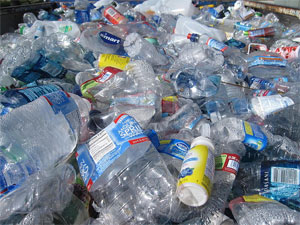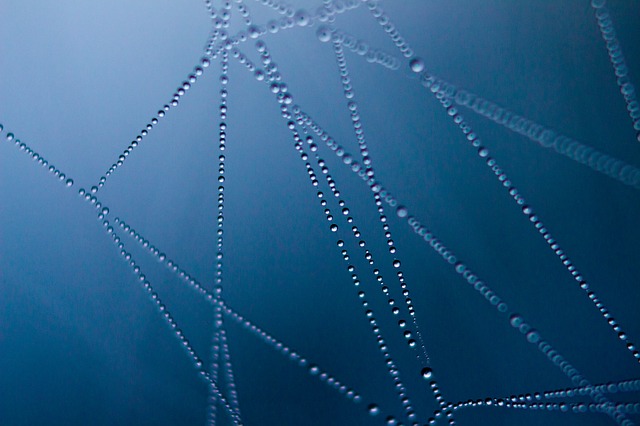Written by: Augustine Au
Augustine is a junior studying Business Administration at the University of Southern California. He is passionate about entrepreneurship and aspires to use his knowledge to positively impact his community.
Abstract
The development of bottled drinking water has revolutionized the way in which the world has acquired and consumed water. This article assesses the history of drinking water, the manufacturing process of plastic water bottles, and its impact on the world.
Introduction
While the average human can survive three weeks without food, they can only survive without water for about 3-4 days. We see the necessity for bottled water every time disasters like Hurricane Katrina, floods, and earthquakes put countless American lives at risk of dehydration. With the help of cheap and light plastic bottled drinking water, however, most survive and have the chance to live another day [1].
Bottled water is not only useful in emergencies, but also in typical daily life. The technology is used by both adults and children alike, whether it be in office settings or lunch bags. It has made the process of quenching thirst so easy that accessing water is generally no longer a concern in the United States. As it has become such a common aspect of modern life, people often take it for granted and don’t question its impact on the world, but perhaps they should.
Where does bottled drinking water come from? How are the bottles made and how is the water prepared? These are all concerns that engineers once needed to address to create this innovation.
Background on the Plastic Water Bottles
The treatment of water is a process that began in ancient history with civilizations like the Greek and Egyptians mainly for aesthetic purposes [2]. In the 1800’s, however, this practice became more health-focused with the discovery of waterborne diseases like cholera. In the 1900’s, government entities became more concerned with addressing these health concerns [2]. After the passage of the Safe Drinking Water Act in 1974, which set standards to protect the quality of drinking water, the percentage of water systems that provided treated water to the public grew significantly [3]. Despite this improvement, however, the increased concern for safe drinking water contributed to the desire for even safer water. This led companies to capitalize on the opportunity to make drinking more convenient to sell their own water.
Bottling companies source their water from a variety of sources including protected underground springs, wells, and municipal supplies. According to Mother Jones, about 55% of bottled water in the United States comes from spring water, while the remaining 45% comes from treated tap water [11]. A number of companies even source their water from foreign or domestic sources.
Manufacturing Bottled Water
Bottled drinking water was invented by combining various technologies, but it can be broken down into two main ones. The first technological contribution is the process of manufacturing plastic water bottles. The second technology is the water filtration process that makes it safe to drink.
How are Plastic Bottles Made?
Thomas, a leading industrial marketplace, provides a detailed explanation of the plastic water bottle manufacturing process [4].
One of the most popular materials used to manufacture plastic bottles is a plastic material called Polyethylene Terephthalate (PET). Adjusting its composition can make it more opaque or transparent. Due to this reason and the popularity of this cheap material, it has become the iconic clear look of plastic water bottles.
They are produced through stretch blow molding. This technique can be applied to create as little as one item or mass produce many at once. It works by applying a careful combination of heat and air pressure to the PET to force it into taking a certain shape. To begin the process, a tube of PET material is placed inside a mold of the desired bottle shape. Heat is then applied to make the material until it becomes malleable. Air pressure is then applied to expand the material like a balloon until it takes the shape of the mold. Once this happens, PET must quickly be cooled down to make it retain its new shape as a bottle.
Following completion of the stretch molding process, bottles are removed from their molds. Excess plastic is trimmed to clean the surfaces and separate the bottles from each other. This prepares them to be filled with water in the next step of the process.
How is Water Purified?
There are three popular methods of filtering used in purifying drinking water: deionization, distillation, and reverse osmosis. Each one is based on a different principle, but they all work to achieve the same goal of separating contaminants from the water.
Water Purification Method 1: Deionization
Deionization works by manipulating the electrical properties of impurities to draw them away from the desired drinking water [5]. These impurities include salts, nitrate, ammonia, arsenic, and metals. Each of them is either positively or negatively charged, thus causing them to behave similarly to magnets. By pumping water through an assembly of positive and negative strips of metal called electrodes, each of these impurities are attracted to the electrodes of the opposite charge. In doing so, the undesirable chemical impurities are pulled aside and treated drinking water is allowed to pass through.
Water Purification Method 2: Distillation
The second popular method of purifying water is called distillation. This is a process which involves separating impurities from water through a heating and cooling process [6]. Boiling causes water vapor to rise, leaving impurities behind. The vapor is then cooled and funneled in a separate container collecting purified water. The resulting product of this process is water in its purest form.
Water Purification Method 3: Reverse Osmosis
To understand the reverse osmosis water purification process, it is necessary to first understand osmosis. Osmosis occurs when liquids move across a semipermeable membrane to equalize the concentration of dissolved content on each side [7]. If salt water and purified water were separated by a semipermeable membrane, for example, then the purified water would try to move across the membrane until the concentrations of salt are equal. Because these semipermeable membranes only allow water to pass, contaminants remain on their respective sides. The process works the same way in the case of dirty water. The water would move from the side with a low concentration of contaminants to the side with a higher concentration of contaminants, yet none of the contaminants would pass through.
As the name implies, reverse osmosis works by reversing the effects of osmosis to separate water from impurities. The goal of this process is not to create a balance in concentrations of dissolved contents on each side of the semipermeable membrane, but rather to create an imbalance. By applying pressure to contaminated water and forcing it to squeeze through a semipermeable membrane, impurities are captured, and purified water passes through [8]. It works like a French Press, which applies pressure to the highly concentrated side (water mixed with coffee grounds) of the semipermeable membrane (metal filter) to yield filtered water on the other side (brewed coffee). Another way to think of it is by imagining how a sink strainer works to capture solids and allow water to squeeze through the holes. Contrary to osmosis, the water from the side with a high concentration of contaminants would be forced into the semipermeable membrane, which functions like a strainer, toward the side with a low contaminant concentration, thus creating purified water. This is how ocean water is desalinated [9]. By using different filters, various types of impurities can be removed [10].
Of these three methods, the most popular water treatment method is through the reverse osmosis system. It is the most cost effective and energy efficient way to treat water. It is simple to set up and has grown in popularity within many households.
Controversy
While bottled water offers many benefits to consumers, it does not come without a cost. This industry has contributed many negative effects on society. The damage can be seen in a variety of ways throughout the world.
Irresponsible overuse of water is one of the main concerns that come with this business. One bottling plant has been known to use 1.63 liters of water for every liter of beverage produced [11]. During the recent California drought, many large bottling companies even contributed to worsening the situation by continuing to exploit groundwater sources. Perhaps the most shocking, however, is the fact that companies extract water from foreign countries only to sell water that could easily be reproduced domestically.
Fig. 5: Drought levels and the water sources of major bottling companies are depicted on this map from 2015.
The overproduction of plastic water bottles is also a major problem. According to the Pacific Institute, Americans’ consumption of bottled water required more than 17 million barrels of water and produced more than 2.5 million tons of carbon dioxide [12]. While many of these bottles get recycled, thus consuming more energy, countless others also make their way into oceans and other environments as pollution. This has been shown to have drastic damage to the environment and to wildlife. Considering that the average plastic bottle takes approximately 450 years to decompose, it is critical that people consider the risks to the environment that this technology poses [13].
Looking Ahead
There is no doubt that plastic water bottles have contributed a great deal to humanitarian efforts throughout the world. They continue to be reliable tools that can save even more lives due to their cheap, easy, and efficient nature. But their environmental damage should also be considered.
References
[1] “During emergencies or natural disasters, bottled water is always there when you need it | IBWA | Bottled Water”, Bottledwater.org, 2018. [Online]. Available: https://www.bottledwater.org/during-emergencies-or-natural-disasters-bottled-water-always-there-when-you-need-it. [Accessed: 06- Nov- 2018].
[2] “The History of Drinking Water”, Nepis.epa.gov, 2018. [Online]. Available: https://nepis.epa.gov/Exe/ZyPDF.cgi/200024H9.PDF?Dockey=200024H9.PDF. [Accessed: 08- Nov- 2018].
[3] “Summary of the Safe Drinking Water Act | US EPA”, US EPA, 2018. [Online]. Available: https://www.epa.gov/laws-regulations/summary-safe-drinking-water-act. [Accessed: 06- Nov- 2018].
[4] “Plastic Bottle Manufacturing”, Thomasnet.com, 2018. [Online]. Available: https://www.thomasnet.com/articles/materials-handling/plastic-bottle-manufacturing. [Accessed: 07- Nov- 2018].
[5] “Capacitive Deionization”, Netl.doe.gov, 2018. [Online]. Available: https://www.netl.doe.gov/research/coal/crosscutting/pwmis/tech-desc/deion. [Accessed: 08- Nov- 2018].
[6] “Understand How Distillation Works”, ThoughtCo, 2018. [Online]. Available: https://www.thoughtco.com/what-is-distillation-601964. [Accessed: 06- Nov- 2018].
[7]”Osmotic Pressure | Introduction to Chemistry”, Courses.lumenlearning.com, 2018. [Online]. Available: https://courses.lumenlearning.com/introchem/chapter/osmotic-pressure/. [Accessed: 08- Nov- 2018].
[8] “Different Water Filtration Methods – Reverse Osmosis and Ultraviolet Radiation | APEC Water”, Freedrinkingwater.com, 2018. [Online]. Available: https://www.freedrinkingwater.com/water-education/quality-water-filtration-method-page3.htm. [Accessed: 06- Nov- 2018].
[9] “How Reverse Osmosis Works”, HowStuffWorks, 2018. [Online]. Available: https://science.howstuffworks.com/reverse-osmosis2.htm. [Accessed: 08- Nov- 2018].
[10] “How Does Reverse Osmosis Work?”, 2018. [Online]. Available: https://www.advancedwaterinc.com/how-reverse-osmosis-works/. [Accessed: 08- Nov- 2018].
[11] J. Lurie, “Your bottled water comes from the most drought-ridden places in the country”, Mother Jones, 2018. [Online]. Available: https://www.motherjones.com/environment/2014/08/bottled-water-california-drought/. [Accessed: 07- Nov- 2018].
[12] “Bottled Water and Energy Fact Sheet – Pacific Institute”, Pacific Institute, 2007. [Online]. Available: http://pacinst.org/publication/bottled-water-and-energy-a-fact-sheet/. [Accessed: 08- Nov- 2018].
[13] Des.nh.gov. [Online]. Available: https://www.des.nh.gov/organization/divisions/water/wmb/coastal/trash/documents/marine_debris.pdf. [Accessed: 07- Nov- 2018].




